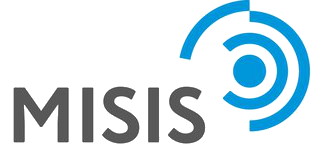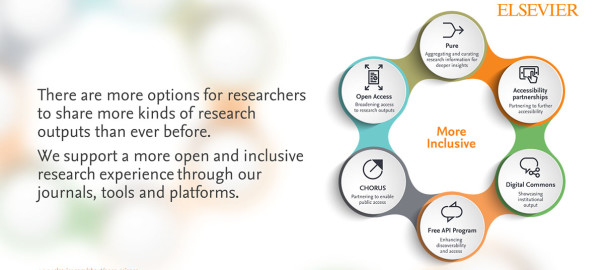July 05, 2018
An inclusive research community has the tools to organize and share their results so others can build on their successes. They encourage participation from everyone with a contribution to make and provide options for people to share research in the way that makes sense to them.
Read more about Elsevier’s approach to open science.
At Elsevier, we are evolving our business to enable an inclusive experience across the spectrum of research outputs. In doing so, we are providing more options for researchers to share more kinds of information while allowing more people to get involved in the scientific process. Here are some examples.
1. Supporting open access
In addition to supporting green open access across all our journals, authors can publish open access in any of our 170 fully open access titles or 1,850+ hybrid journals. After publication, the article will immediately be free for everyone to read on ScienceDirect.
For example, when Dr. Ting Wang and Dr. Ian Hagemann of Washington University published groundbreaking research about their use of epigenetics to map the switches that help uterine cancer cells hide and spread, it was ScienceDirect’s combination of access, visibility and durability that prompted them to publish open access in Elsevier’s journal Neoplasia. Reporting on their research in Elsevier Connect, they wrote:
We chose an open access model for publishing to maximize the impact of our work. Open access is a wonderful way to lower barriers to scientific communication, when coupled with robust editorial standards and peer review. Having the article on ScienceDirect is important to us because it’s a durable and visible repository. We can count on ScienceDirect to provide high-quality content, carefully edited, with correct standards of proofreading and publishing.
Read more about Elsevier’s approach to open access.
2. Partnering for web accessibility
In developing our web applications for science, we make several layers of accessibility checks to ensure that someone with a disability using assistive technology will have a successful experience. For example, visually impaired researchers rely on screen readers to read text aloud and interpret images in articles, and these programs struggle with scientific charts and graphs.
Last year, Elsevier worked with the creators of the third-party software library Highcharts to produce charts and graphs that could be read in a more comprehensible way. For Lucy Greco, a test user for Highcharts who has been blind since birth, the difference was substantial. “This innovation allows me to interact with the chart and understand the relationships of all the components of the chart to all other components rather than just getting a description of the chart,” said Lucy, a Web Accessibility Evangelist for Information Services and Technology (IST) at the University of California, Berkeley, in an Elsevier Connect story. “I used to have to pay a reader or find a volunteer. Somebody else had to be involved, so I had to schedule the time to get the information. Now I can interpret charts on my own.”
Read more about Elsevier’s work with Highcharts.
3. Making research assets more visible
Increasingly, cities are looking to fuel innovation by showcasing their research assets. Doing so can help industry connect with academia, can help businesses connect with talented researchers and can help researchers find funding. It’s a way of bringing more people into the realm of research and accelerating innovation.
In the US, New Jersey took this approach with its Research Asset Database, which uses Pure – Elsevier’s research information management system – to open a window onto the people and places in their research community.
Describing the publically accessible portal, Eli Khazzam, State Project Director for the New Jersey Economic Development Authority, said:
A business might say, ‘We’re thinking of setting up in New Jersey, but we need experts in a particular kind of life science research.’ What this database will do is allow visitors to find those individuals to see what they’ve published, who they’ve worked with, what university they work at, and to establish that there’s a valuable connection they can set up.
Read more about Elsevier’s work with New Jersey.
4. Free API program
We provide a freely available set of application programming interface (API) tools through ScienceDirect’s API Developer Portal, which institutions can use to increase discoverability of and access to research articles.
For example, the University of Florida is using the ScienceDirect Article API to make its Elsevier-published research easily available in its institutional repository as part of a pilot program. Dean of Libraries Judith Russell and her team wanted to find ways to better identify faculty authors and improve access to their own research, which is stored in an institutional repository. “We wanted to know comprehensively everything that UF authors have published,” Russell explained in Elsevier Connect. “We want to brag about our authors (and) track the scholarly contributions that have come out of this university. The logical choice (was to go to with) Elsevier. … (It) was the best place to begin”
Read more about our collaboration with the University of Florida.
Contributors




